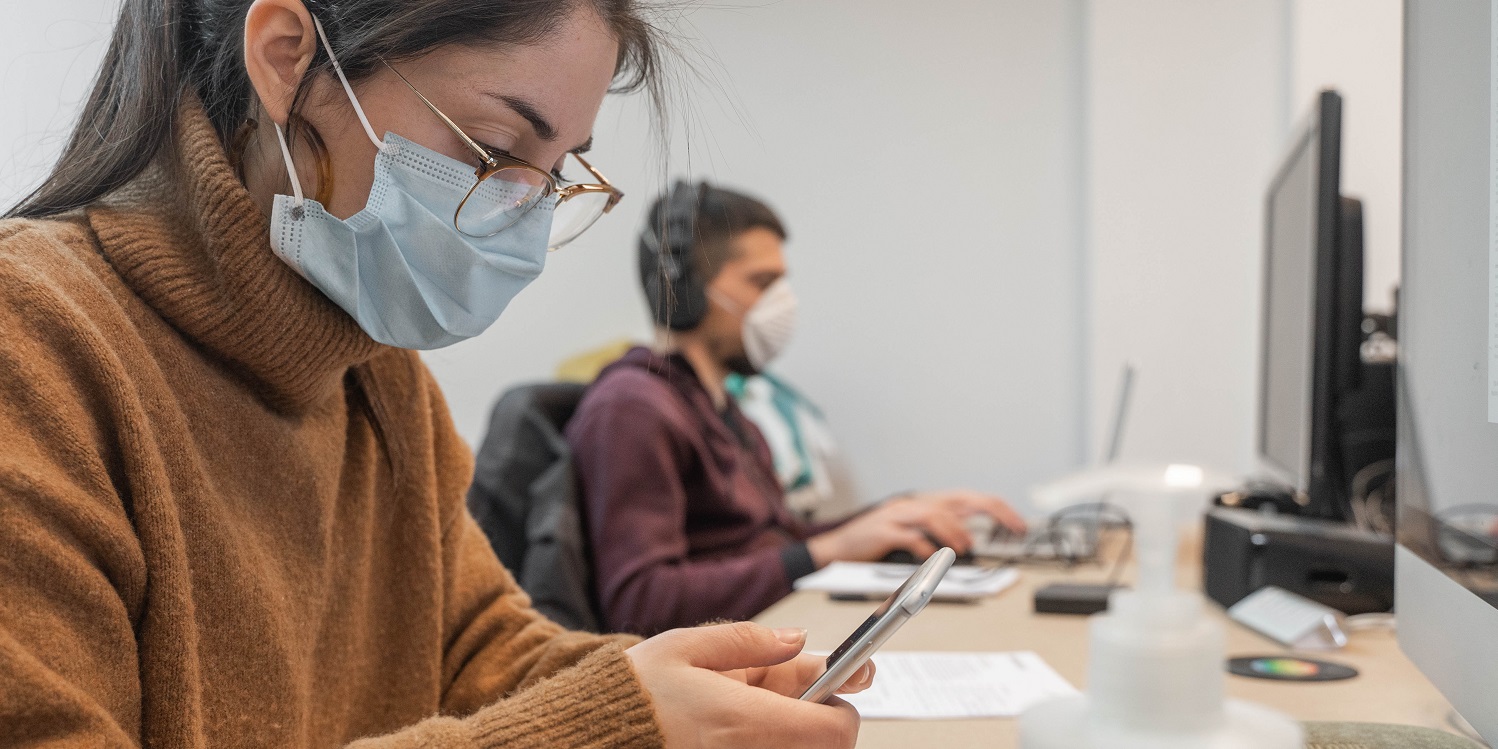The coronavirus pandemic has redefined the state of work as we know it. Businesses have had to quickly react and adapt to a sudden shift to home working. Trends we already knew were on the rise (such as flexible working requests and the adoption of software tools to aid collaboration) are now increasing much more rapidly.
So, what are the experts and research suggesting about how COVID-19 will change how we work long term? We’ve gathered some key studies and articles on the changing professional landscape in response to the pandemic, to look at the bigger picture on what the world of work will potentially look like in the future.
Working from home

By far the biggest change to the landscape of work as we know it post-COVID 19 has been the dramatic shift towards working from home. This is looking set to stay as a long-term trend, with home working numbers expected to be much higher than they were pre-pandemic.
As reported by Personnel Today, a study from the British Council for Offices found that only 30% of office workers surveyed were considering going back to office work full time and 15% wanted to work from home full time.
Another survey from the Institute of Directors found, similarly, that more than half of their respondents planned to reduce using physical office space and most anticipated a rise in homeworking after the pandemic. The Wales Institute of Social & Economic Research, Data & Methods also found in a recent COVID-19 UK study that:
“Nine out of ten (88.2%) of employees who worked at home during the lockdown would like to continue working at home in some capacity with around one in two employees (47.3%) wanting to work at home often or all of the time.”
The long term impacts of working from home
As for how effective working from home seems to be now that many of us are doing so more often – the research on this comes to mixed conclusions. There have been positive findings. The Harvard Business Review recently replicated their 2013 study on homeworking. They found that knowledge workers have benefitted in key ways from home working, such as workers having an increased focus on the work that really matters (partly due to a reduction in meetings) and taking more responsibility for their own schedules.
On the other hand, Forbes recently reported on data from the Bureau of Labor Statistics in the US that suggests working from home has had a negative impact on employees’ mental health across industries and that job satisfaction/motivation had also decreased. The research found that:
“Before COVID-19, 62 percent of employees reported positive mental health. As the pandemic continues, that number has dipped to just 28 percent.”
These drops in mental health and motivation may well be due to other factors instead/as well – such as the stress of the pandemic situation itself and the circumstances in which home working rapidly rose. However, it will be prudent for organisations to monitor the long-term impact of home working on staff wellbeing and productivity.
Learn more: Coronavirus: how to manage employees working from home
Flexible working

Flexible working is also likely to be on the increase in the wake of the coronavirus pandemic, as many employers and employees alike have discovered how flexible working can be positive for their organisations when implemented effectively. As HR expert Gemma Dale explains in her guide to flexible working for myhrtoolkit, flexible working can take many different forms, such as going part time, job sharing, compressed hours, flexi time, and working from home part/full time.
A study from Direct Line Life found that there may well be a rise in flexible working requests post-COVID 19. They report that 44 per cent of workers (more than 13 million people) plan to ask for permanent flexible working arrangements after coronavirus restrictions are fully lifted. Many employers are anticipating an influx of hybrid working requests from staff who want to have a mixture of working from home and from the office.
Furthermore, according to the study, HR Directors are expecting 70% of the workforce to have some form of flexible working arrangement once coronavirus restrictions are fully lifted. This constitutes a 45 per cent increase on current flexible working levels.
Getting ready for flexible working requests
Does your organisation have a plan in place for a potential increase in flexible working requests? We recently ran a webinar on the future of flexible working with Gemma Dale as a guest speaker, where she covers how to successfully implement flexible working in your organisation.
Office working

The style in which people work in offices inevitably looks set to change in the future too. The health and safety implications of office work during a pandemic have certainly had an impact, pushing employers to redesign office layouts and workspaces to ensure social distancing can be maintained. This has also necessitated a different approach to communal areas, with an increase in cleaning and hygienic practices.
Learn more: Coronavirus in the workplace: how to keep employees safe
Whilst many workplaces currently stand empty due to the pandemic, few people are predicting that offices will become obsolete due to pandemic-related changes. Professor André Spicer of City University's Cass Business School recently told the BBC that workers will still want to be seen in person by their employers so it’s less likely they’re passed over for promotions or made redundant.
However, the consensus appears to be that office use will dramatically decrease, given the productivity and wellbeing benefits of cutting out commutes to work, as well as the financial gains for businesses from not needing as much office space. The Guardian recently reported that, according to the latest CBI/PwC financial services survey, 74% of companies are taking stock of office requirements to either use office space differently or reduce it.
Collaborative working away from the office

The huge shift towards remote working instead of office working has also caused changes in how we work collaboratively. The adoption of technology to aid collaboration has grown rapidly in the past 6 months. In a recent Slack Frontiers conference session, which looked at the state of collaboration in 2020, Wayne Kurtzman from the International Data Corporation (ICD) reported on their recent findings that over 90% of enterprises they surveyed will be adding team collaborative management, video, security, and productivity tools as technological solutions.
Learn more: How employees can stay connected while working from home
Thought leaders are commenting on how more traditional, office-based strategies and processes can be emulated in remote settings where team members are more scattered. The McKinsey Institute provide the following example:
“Previously, for example, organizations may have generated ideas by convening a meeting, brainstorming on a physical or digital whiteboard, and assigning someone to refine the resulting ideas. A new process may include a period of asynchronous brainstorming on a digital channel and incorporating ideas from across the organization, followed by a multi hour period of debate and refinement on an open video conference.”
Many businesses are now adopting more communication, recruitment, management, productivity, and HR software solutions to help them become more agile and navigate the rapid shift to remote teams. It’ll certainly be interesting to see how and where technological adoption booms in the coming months and years as workplaces continue to evolve.
Read more from our blog
How coronavirus has impacted the biggest causes of staff absence
The future of remote working - what do employers think?
How HR software is helping businesses adapt to the new normal

Written by Camille Brouard
Camille is a Senior Marketing Executive for myhrtoolkit who writes on topics including HR technology, workplace culture, leave management, diversity, and mental health at work.


 Holiday Planner
Holiday Planner Absence Management
Absence Management Performance Management
Performance Management Staff Management
Staff Management Document Management
Document Management Reporting
Reporting Health and Safety Management
Health and Safety Management Task Management
Task Management Security Centre
Security Centre Self Service
Self Service Mobile
Mobile



